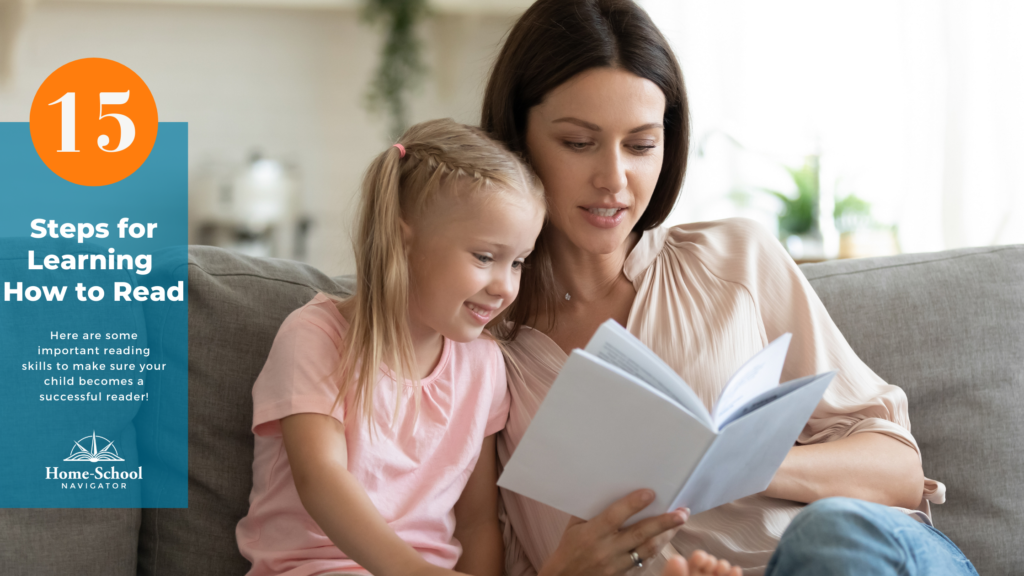When it comes to reading, it is important to take care with the basic, fundamental components. The following skills must be mastered to become a confident reader. While becoming a reader is complex, here are some important reading skills to make sure your child becomes a successful reader:
- READ AND TALK ABOUT WHAT IS GOING ON IN BOOKS EVERY DAY!
- Hearing rhymes (even before they know any letters or sounds!) Ask, “What does the word ‘cat’ rhyme with?” Read lots of rhyming books!
- Sound Manipulation (do this without letters for the earliest readers)
- Alliteration: For example,(Peter Piper picked a peck of pickled peppers – emphasize the “/p/ /p/ /p/ /p/ /p/” sound).
- Sound Distinctions: For example, the teacher says, “map, mom, mouse, banana. Which word does not belong?” (banana)
- Sound Blending: (for early learners, no letters need to be used) For example, the teacher says, “/b/ /a/ /t/.” The child says, “bat.” This will be very beneficial when your child begins to work with sounds and letters and learning simple words. Once your child is confident with this, try this activity, “Blending Sounds” PDF.
- Taking Words Apart: (for early learners, no letters need to be used) For example, the teacher says, “jet”. The child says, “/j/ /e/ /t/.” For extra practice with this skill try this activity, “STRETCH OUT THE SOUNDS” PDF.
- Sound Substitution and Deletion: (for early learners, no letters need to be used) For example, the teacher says, “If you change the first sound in mop to a /t/ sound, what new word do you have?” (top) OR Teacher says, “If you remove the sound /t/ in tall, what word do you have?” (all)
- Alliteration: For example,(Peter Piper picked a peck of pickled peppers – emphasize the “/p/ /p/ /p/ /p/ /p/” sound).
- Connecting sounds to letters: Use environmental print in signs and labels at home and in the car (like Jif peanut butter or Wendy’s restaurant) to connect to sounds and eventually, letters.
- Print concepts: Have your child identify the front of a book, pages get turned from left to right, the print on the page tells the story, etc.
- Learning sounds: The following order is recommended:
- First, focus on the sounds /m/, /s/, /a/, /f/, /t/, /p/
- Second, focus on the sounds /c/,/o/, /b/, /r/, /t/, /n/
- Third, focus on the sounds /g/, /l/, /e/, /d/, /k/, /h/.
- Fourth, focus on the sounds /j/, /w/, /z/,/ŭ/, /v/, /y/
- Fun Activity to try at home: Sort the Sounds Game. You will need these two PDFs:
- Sort the Sounds Instructions PDF
- Alphabet LinkingChart PDF
- Learn letters: This does not need to be in order! Here are some simple words to start with: start with the child’s name, mom, dad, sibling’s names, etc.
- RULE: ALWAYS use what the child knows to help him or her gradually expand to learning what he or she doesn’t know. Use the concept: “less is more.” Once the child knows what letters are and has some confidence, he or she will expand that learning quickly.
- RULE: ALWAYS use what the child knows to help him or her gradually expand to learning what he or she doesn’t know. Use the concept: “less is more.” Once the child knows what letters are and has some confidence, he or she will expand that learning quickly.
- Use step #3 with letters to blend sounds while looking at the letters. “STRETCH OUT THE SOUNDS (with letters)”
- Begin learning simple, familiar sight words. These should be worked with frequently using clay, sand, or magnetic letters. Play games with them.
- Work with word families. The purpose of learning word families is to identify a known word in order to help learn other unknown words. If the child can read the word, “cat” he or she can also read, “mat,” “hat,” “sat,”, etc.
- Move into higher-level phonics skills such as blends, digraphs, etc.
- Make sure books that are being read by the child are at his or her reading level. Frustrating books lead to frustrated readers!
- Encourage rereading. When a child is reading and he or she has made a mistake, WAIT before interjecting the correction. Give him or her a moment to try and figure it out on their own. If they do not notice they have made an error, give a vague prompt like, “Something tricked you. Go back and see if you can fix it.” If he or she does not get it still, tell them, perhaps give a VERY quick explanation about the error and move on. Don’t talk it to death!
- Ask questions while reading and enjoying books! This will help the child learn vocabulary and understand what is being read.
- Be aware that reading involves complex skills and children need to be exposed to the 5 following elements regularly:
- Phonemic awareness – the ability to hear and manipulate the different sounds in words
- Phonics – recognizing the connection between letters and the sounds they make
- Vocabulary – understanding the meaning of words, their definitions, and their context
- Reading comprehension – understand the meaning of text, both in storybooks and information books
- Fluency – the ability to read aloud with speed, understanding, and accuracy
And here’s a sweet treat for everyone. Click HERE to download FREE PDF guide that will help you teach your kids how to read!

